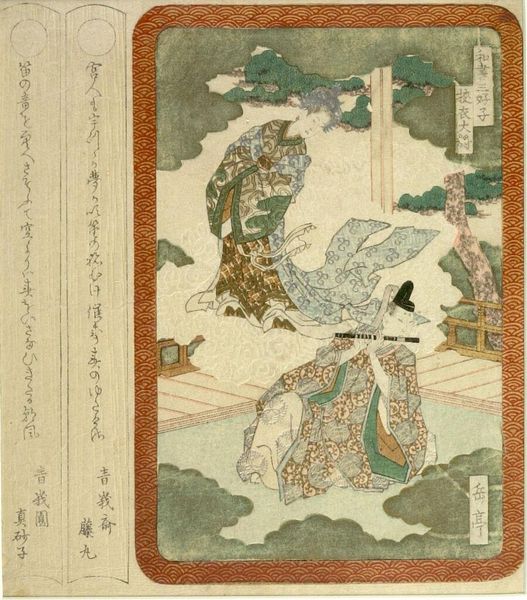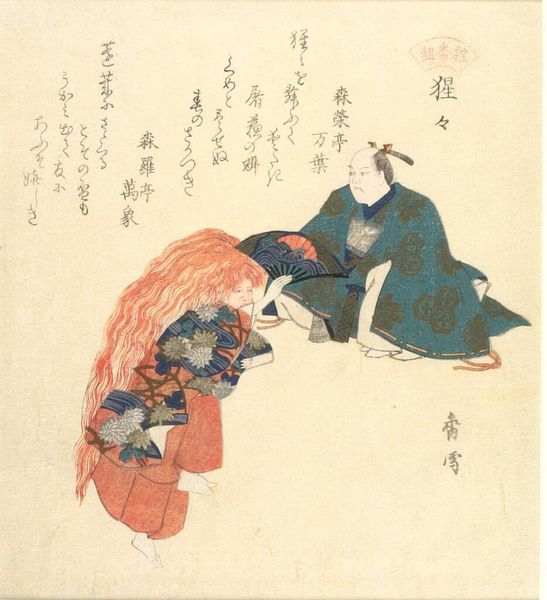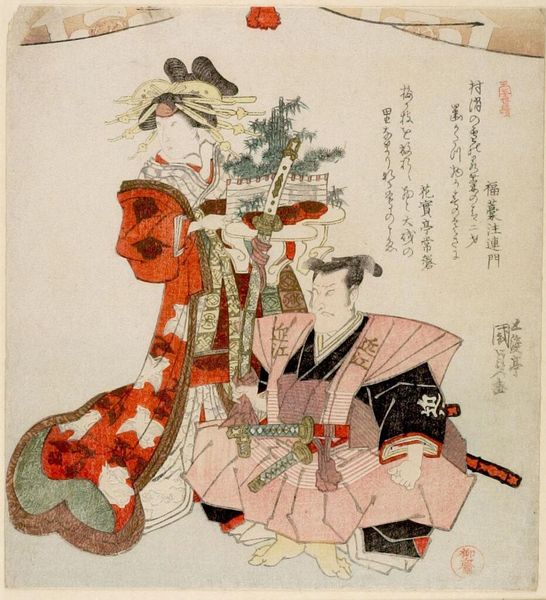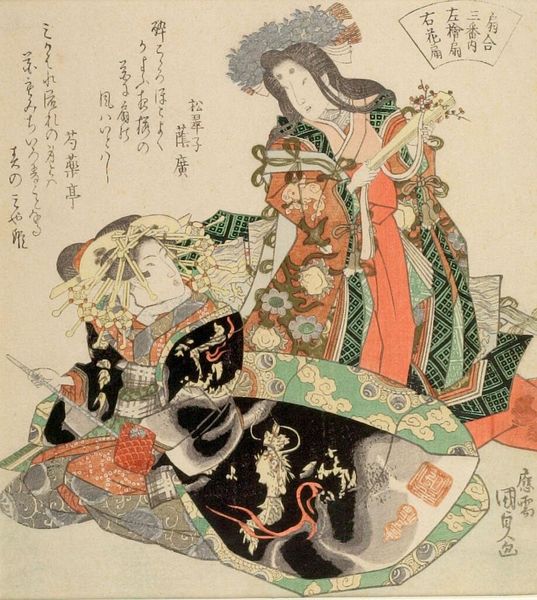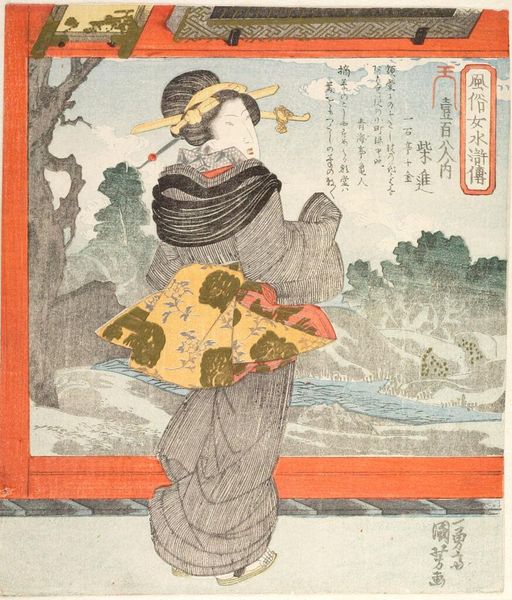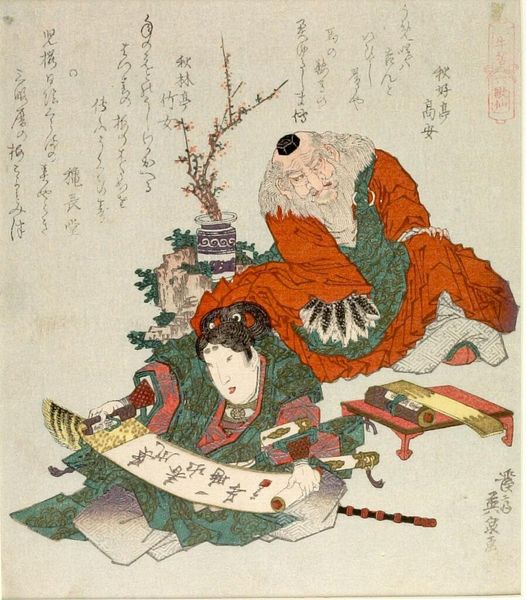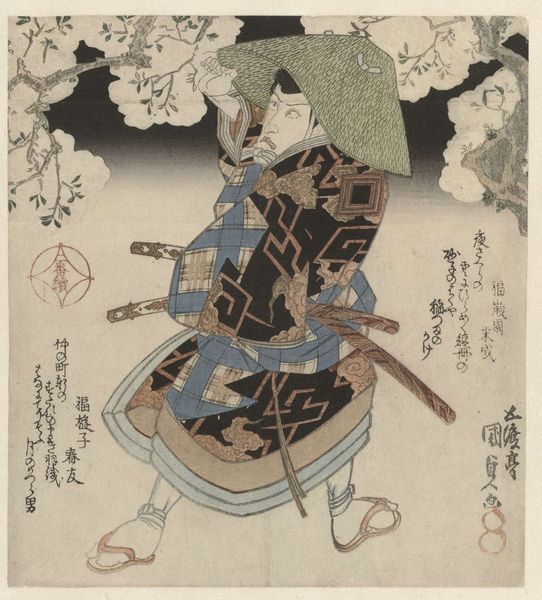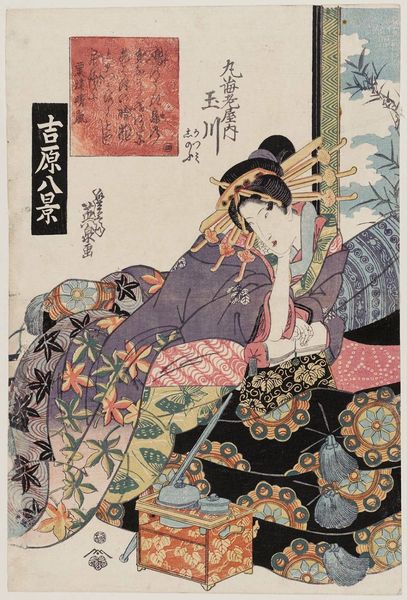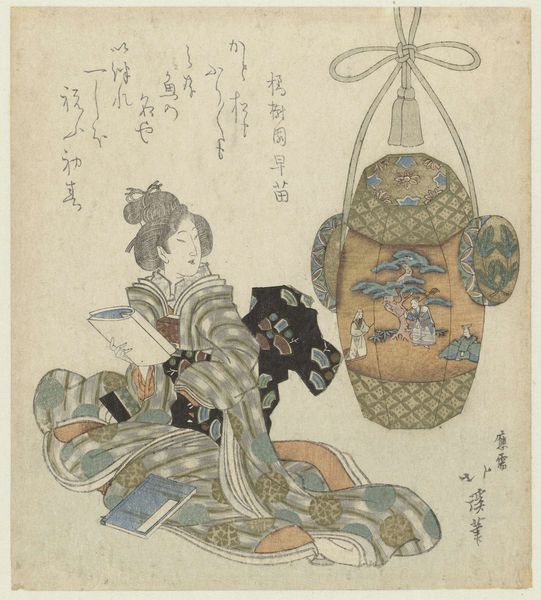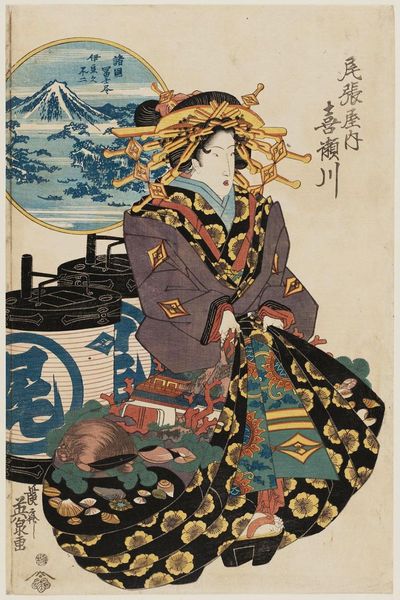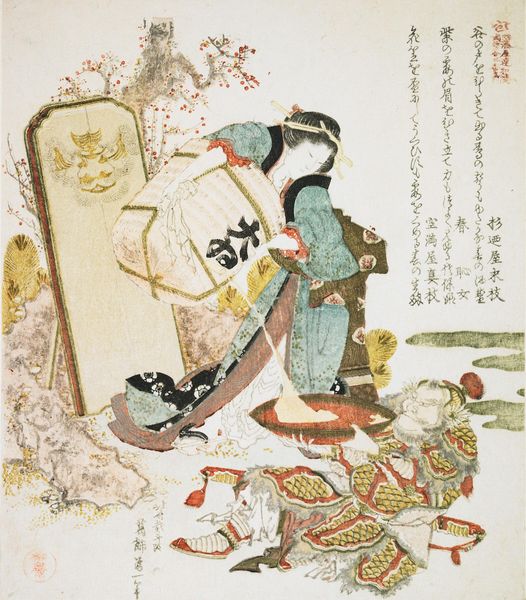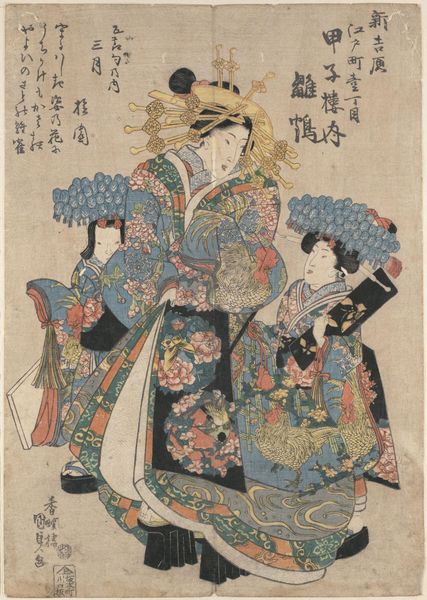
print, woodblock-print
#
narrative-art
# print
#
asian-art
#
landscape
#
ukiyo-e
#
figuration
#
woodblock-print
Copyright: Public domain
Editor: This is "The Salt Dragon," a woodblock print made around 1832 by Toyota Hokkei. It feels like a peek into a very specific ritual. What strikes me most is how a common act like taking medicine or eating becomes almost theatrical. What do you see in this piece, considering the context of its time? Curator: This print reveals a fascinating intersection of folklore, consumer culture, and the theatrical world in 19th-century Japan. The “Salt Dragon” likely refers to a popular Kabuki play or urban legend of the time. Printmaking, particularly Ukiyo-e, became a crucial medium for disseminating these stories and celebrity actors. Notice how the figure’s elaborate attire suggests a character, perhaps referencing a specific on-stage portrayal. How do you think the print's circulation would influence the perception of this figure and the associated narrative? Editor: It’s interesting how the print serves as both documentation and promotion. Seeing the details of the actor's costume in this accessible format would definitely build hype for the theater production itself. It’s like early fan art, in a way. Curator: Exactly. And think about the role of the publisher in all of this. They're essentially mediating the public’s engagement with culture. The choice of imagery, the quality of the print, all contributed to shaping popular taste. The placement of the text cartouches, along with their allusion to classical poetry, further elevates the perceived sophistication of the subject matter. Do you think that these cultural products democratized or codified social strata and knowledge? Editor: I see what you mean; mass production doesn't always mean equal access or interpretation. Perhaps the illusion of access was more valuable. Curator: Precisely. This print provides us with a complex look into the interplay of theatre, printing, and society. It asks us to think critically about how visual culture both reflects and shapes our understanding of history. Editor: Thanks, I will now look differently at woodblock prints and think about their larger social role.
Comments
No comments
Be the first to comment and join the conversation on the ultimate creative platform.
